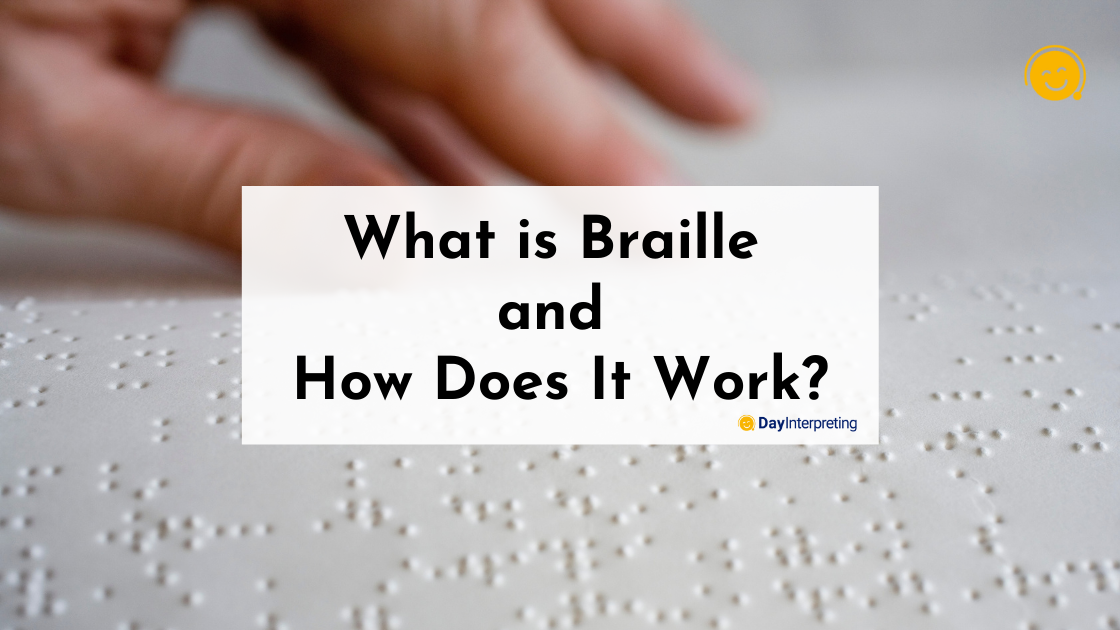You’ve seen it and might have felt it. But unless someone close to you is visually impaired, you might not have given braille language much thought. Although many of us understand that braille is critically important to blind readers, we don’t all fully understand it or how it works. So what is braille and how does it work?
On a mission to support and promote the love of languages, Day Translations and Day Interpreting thought it would be wise to shed some much-needed light on the subject.
How Does Braille Work?
Blind and visually-impaired individuals learn to read braille the same way any average person would learn to read letters. It all starts with learning the alphabet.
Braille was invented by Louis Braille in the 19th century. Words are formed using braille cells, which are combinations of six raised dots. In braille, there are two levels: grade 1 (uncontracted braille – every letter is written by itself) and grade 2 (contracted braille where a series of forms condense letters into words). So, in essence, braille is a code that enables people to read through touch.
Before braille was invented, blind people didn’t have many opportunities for education and employment. The existing schools for the blind focused on teaching basic trade skills while reading, writing, and other academic studies were ignored. Braille changed all that and gave blind people a way of communicating with the world and getting educated.
Because braille is a code and not a language, it’s easy to translate, interpret, and transcribe it into several languages like Italian, English, German, French, and Spanish.
The Grades of Braille ‘Language’
In most languages, different versions (grades) of braille are used. Here’s a look at each grade:
Grade 1 Braille
As mentioned earlier, grade 1 braille is a letter-for-letter substitution of each letter of the alphabet. For beginners, this is the preferred code because it allows them to get familiar with the aspects of reading braille.
Grade 2 Braille
Braille Grade 2 uses contractions that form sequences for the spelling of commonly-used letter groups. It’s like the contractions we use in English, for example, “cannot” versus “can’t”, so it’s a way of shortening words. Grade 2 braille is used to shorten the time it takes to read and write in braille and is, therefore, the most commonly used form of braille code in books, public signage, and restaurant menus.
Grade 3 Braille
Braille Grade 3 is the least used form of literary braille code. It’s considered the “shorthand” of the code and compresses entire words into one of a few characters. But because there’s no official standardization for grade 3 braille, official publications don’t use it, but it can be found in personal letters and notes.
Transcribing and Translating Braille
Many people confuse braille transcription with braille translation, which conveys a misleading belief that braille is a language instead of a writing system. When braille is transcribed, the printed braille code is typed up in text form. Translating braille refers to the process of translating the braille code into a spoken language.
Final Thoughts
As you can see, braille is not a language but rather a unique code that enables blind and visually impaired individuals to read through touch. Although it’s easier for children to learn to read braille than adults, it’s never too late to learn a new skill. Technology will likely increase accessibility for non-braille options in the future, but braille is unlikely to lose its usefulness any time soon!





0 Comments